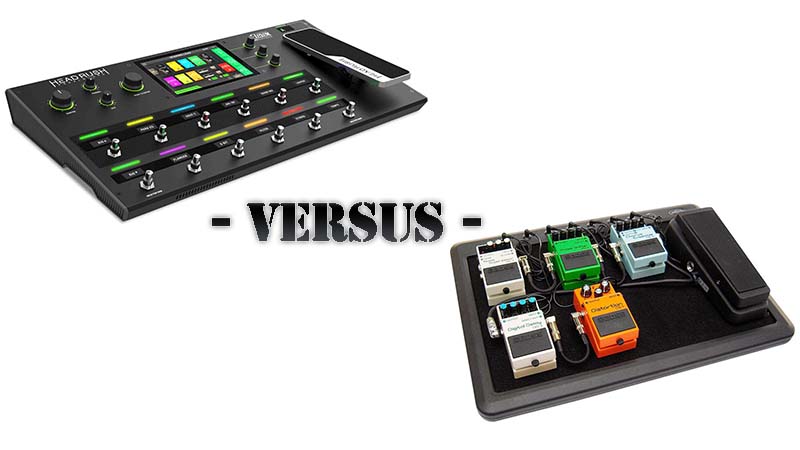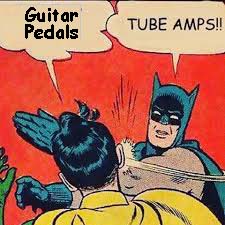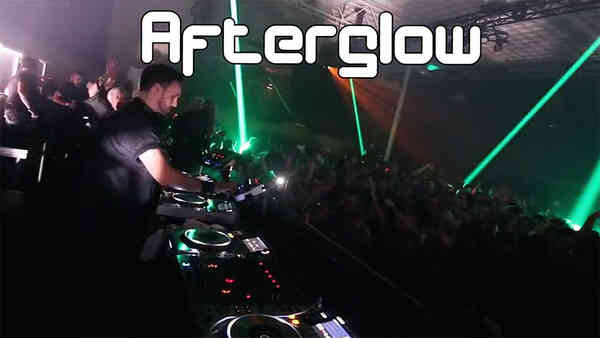Stomp-v-multi pedal - don't make these 4 common mistakes when buying
.jpg)
Multi guitar pedals are all-in-one units containing a lot of processing power which can create effects chains and model amplifiers and cab profiles at the same time.
They are convenient and neat, but do you need one when a couple of stomp boxes could do the same job and save money?
If you play into a real amplifier, then the amp and cab modelling feature is superfluous. If you want to DI (direct inject) into your PA or FRFR then a multi effect guitar pedal is ideal.
My own opinion is that no self-respecting guitarist should DI. Does Larry Carlton have a multi effects pedal? I rest my case.
Where an multi effects pedal is a winner over stomp boxes is in organising tones into setlists. Honestly, unless your band plays multiple genres you'll probably only need just two tones; clean and over-drive.
The theory is compelling. I really want one that works for me, but I've had three multi pedals and sold them within months.
 just don't have anything close to studio quality effects.
just don't have anything close to studio quality effects.
They tend to get muddy when you long chain effects (though that's true of effects in general).
All those nuanced delays etc. get lost when the band is playing (unless you are the only guitarist in a small band).
What to look for in a multi effects guitar pedal
You don't need
- Hundreds of connections. XLR sockets are nice but balanced TRS more than sufficient
- The ability to act as an audio interface into your DAW - get a real audio interface to do that!
- Looper - unless you're Ed Sheeran you won't use it live - there are better backing tracks to practice along to
Nice to have
- The ability to load IR's (impulse responses) - though I've never had an IR that works, they're too nuanced to cut through.
- Build quality - flimsy kit that sits on the floor will not survive your world tour! The enclosure must be steel and knobs substantial.
- Built-in tuner

You buy a pedal with your ears, not your eyes. This is where multi effects pedals are weak. They
The point of a pedal board is to keep it simple. Most multi effects pedal boards look like a spaceship control unit and positively put you off experimenting with sounds. multi effects Pedal boards usually have an app which you can load onto your PC/iPad and build pre-sets. It's not uncommon now for multi-effects to link with apps on any smart device, where you can get in for deep editing of parameters and settings. Currently, only one (Headrush) has a built-in interface with a touch screen. No doubt other manufacturers will follow suit and add touch screens to their products.
The guys on the pedal show are deeply critical of any multi effects unit that has does not have a direct mains connection with 230/110 Volt kettle style mains lead. In my opinion as an electrical engineer, having the power supply built in does present extra challenges for a pedal board, which must therefore be larger and get hotter. It's not a deal breaker for me either way and I have no problem with low voltage connection into the unit from an in-line transformer or plug-in to a power socket. It would certainly not be a deciding factor in buying a pedal, nor would an external supply be a cause for rejecting a pedal.
In recent times the multi effects units’ market has fragmented into three main categories…
- the top-of-the-line pedal board which is larger has eight or so footswitches and an expression pedal
- the gig board, which is a stripped-down version of the pedal board including all the same effects and software but in a more compact unit.
- there may be another model to cover the budget price point with reduced functionality and at the sacrifice of build quality.
As you move up the ranges, you'll start to see extra features and functionality like loopers, hardened chassis models and extra connectivity. Choose carefully!
Conclusion
Budget. Simplicity. Priority effects. There are things multi effects pedals do that stomp boxes don't. You don’t need every bell and whistle. Try before you buy.
NEXT >> the holy grail of guitar tone

